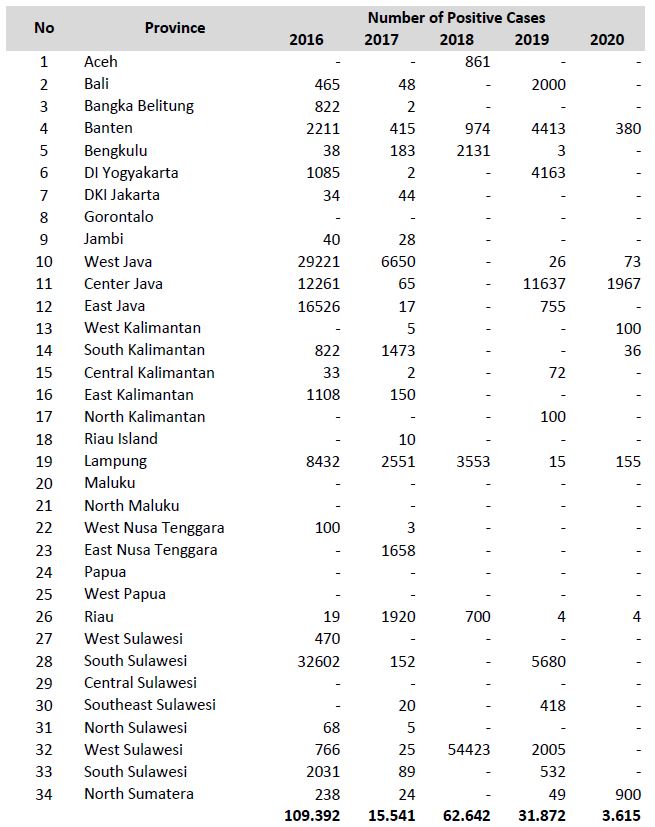
Avian Influenza Surveillance in Poultry: What to Expect
Since 2003, Avian Influenza (AI) has been a problem and it remains endemic in Indonesia. This disease has been detected in human and animals especially poultry. Although the infections in human are in small number and limited to human-to-human transmissions, it has caused a bigger case in poultry and affected from backyard to commercial farms which can lead to economic loss in poultry production sector.
Avian Influenza is caused by Influenza type A viruses from Orthomyxoviridae family which are single stranded RNA viruses. Avian Influenza virus, just like other Influenza viruses, is relatively high in mutation rate. This RNA virus has segmented genome which facilitates genetic recombination or reassortment.
AI virus classified into two based on their pathogenicity: Low Pathogenic Avian Influenza (LPAI) and Highly Pathogenic Avian Influenza (HPAI). LPAI typically shows clinical signs which mostly includes respiratory disorders and egg production drop while the HPAI shows more complex and multisystemic disorders which are not limited to respiratory disorder but also nervous, digestive, and reproductive system. It is also common to find sudden death with or without clinical signs. The mortality rate of LPAI is relatively low (< 5%) with morbidity more than 50% while the HPAI can reach 100% mortality and morbidity.
Indonesian Government has been conducting surveillance to monitor Avian Influenza in poultry in Indonesia. What to expect from this surveillance? The aim of AI surveillance in Indonesia is generally to identify infection and virus shedding in its hosts. It also will provide data about the risk of co-circulation and or co-infection between the subtypes of AI virus. Some surveillances were continued with identification and characterization of AI virus in molecular level to understand more about the diversity and the change of the viruses.
Based on data from surveillances conducted from 2016 until 2020, Avian Influenza is still endemic in Indonesia. The number of the cases were diverse from each province in Indonesia since the number of poultry population in each province was different.

Source: Disease Investigation Centers data (2016), confirmation cases from Provincial Livestock Services (2017-2019) and iSIKHNAS (2020).
Based on data from surveillance in East Java and Central Java conducted by Disease Investigation Centre (DIC) Wates, Yogyakarta in 2020, the subtypes of AI viruses that were circulating were H5 and H9 subtypes. The surveillance results also showed that the case number of AI subtype H9 was higher than H5.
Some of the viruses that have been isolated form the surveillance samples were successfully characterized in molecular level. The result of this characterization showed that AI subtype H5 was from H5N1 clade 2.3.2.1c and AI subtype H9 was from H9N2 clade Y280. The result generally showed that there was no new variant of AI virus identified. The latest subtype of AI virus that was officially announced by Indonesian government was H9N2 in 2017. However, previous DIC Wates surveillances from 2016-2019 showed that the AI subtype H5N1 clade 2.3.2.1c has been changing and at least has formed two groups: 2.3.2.1c group I and 2.3.2.1c group II.
Avian Influenza surveillance in poultry is very important to monitor AI viruses in Indonesia. It also helps to update the variant of the viruses in order to ensure that the vaccine viruses used are completely match with the variants that are circulating in the field. More importantly, it will trace and identify the mutation of the virus considering that AI virus is constantly changing overtime.
Author: Jesiaman Silaban (Disease Investigation Center Wates)
Originally published on 04 January 2022
References:
Putri, Khrisdiana; Widyarini, Sitarina; Sugiyono; Asmara, Widya. 2019. The Thrift of Avian Influenza in Indonesia. IntechOpen. doi:10.5772/intechopen.85105.
Wibawa, Hendra. 2020. Kharakterisasi Genetik dan Antigenik Virus HPAI H5N1 dan LPAI H9N2 pada Unggas dan LPAI H1N1 pada Babi di Indonesia (2016-2019). Retracted from IVM Online https://ivmonline.org/en/news/9


